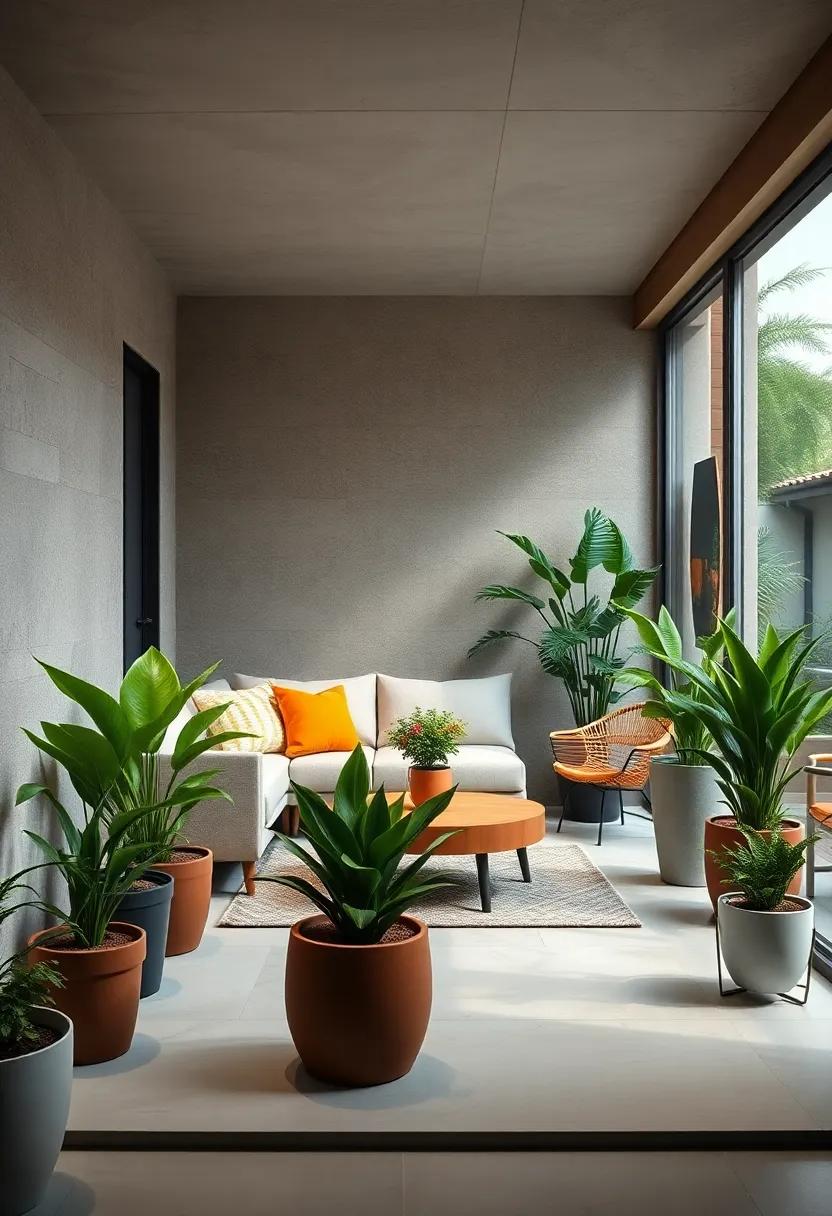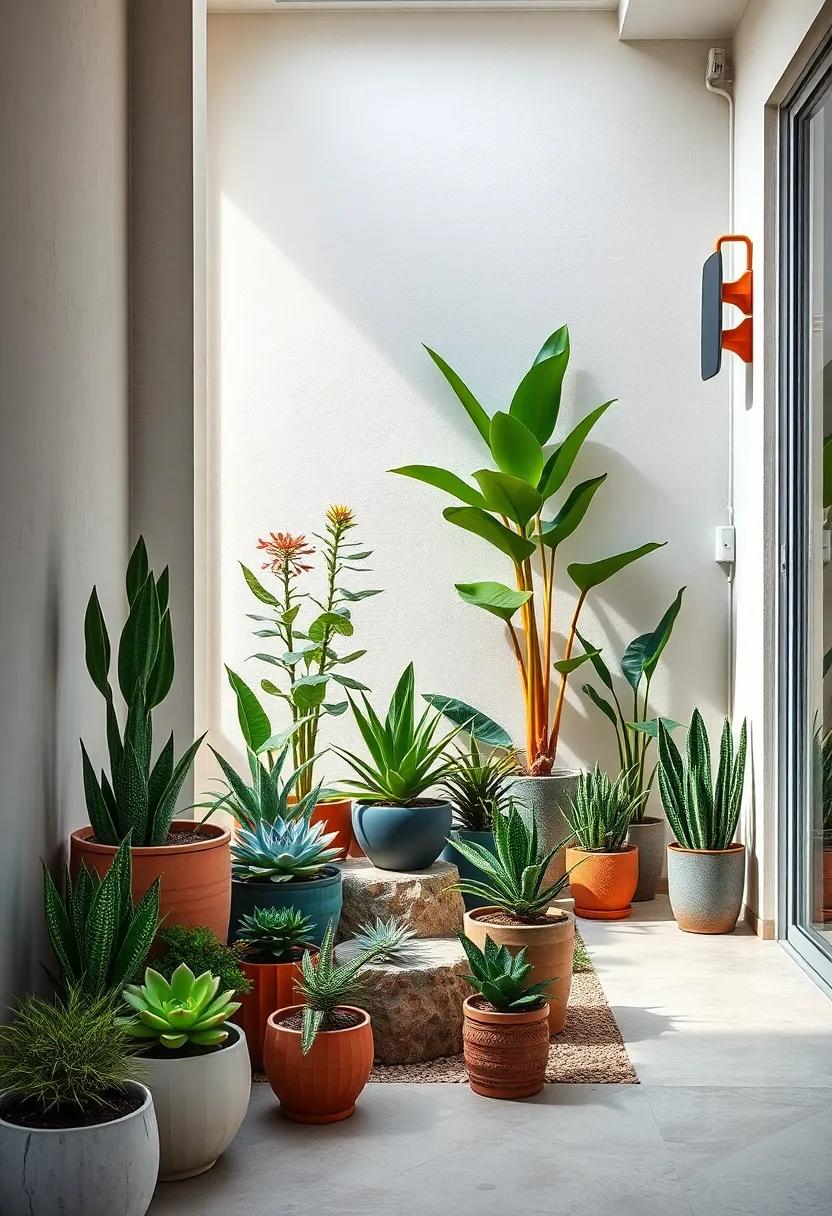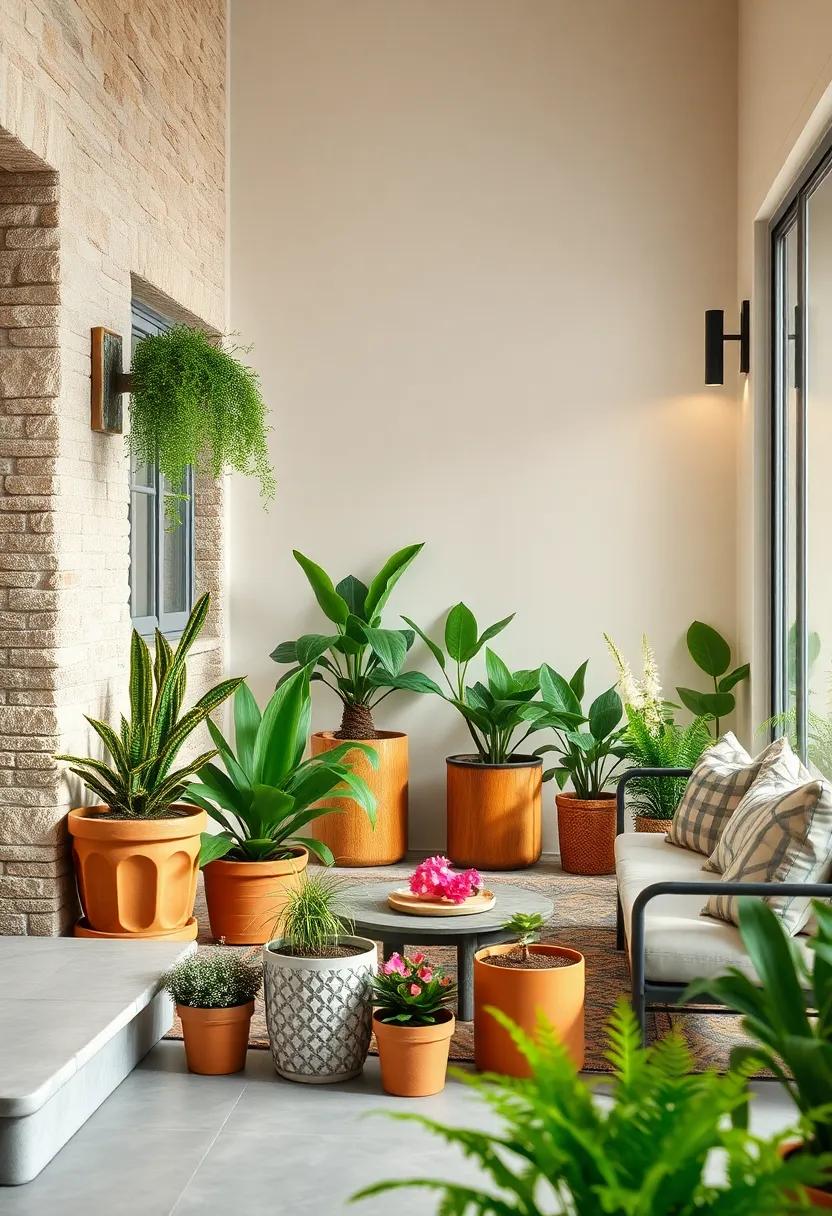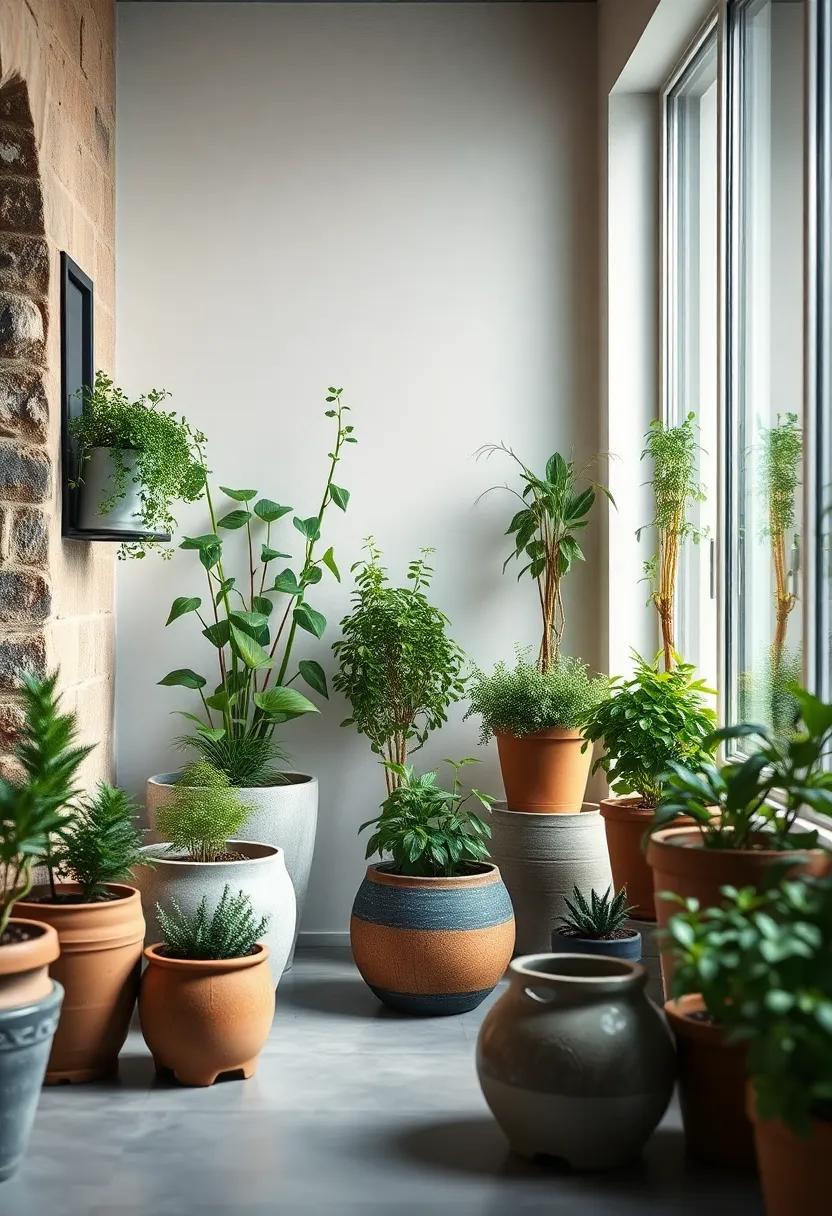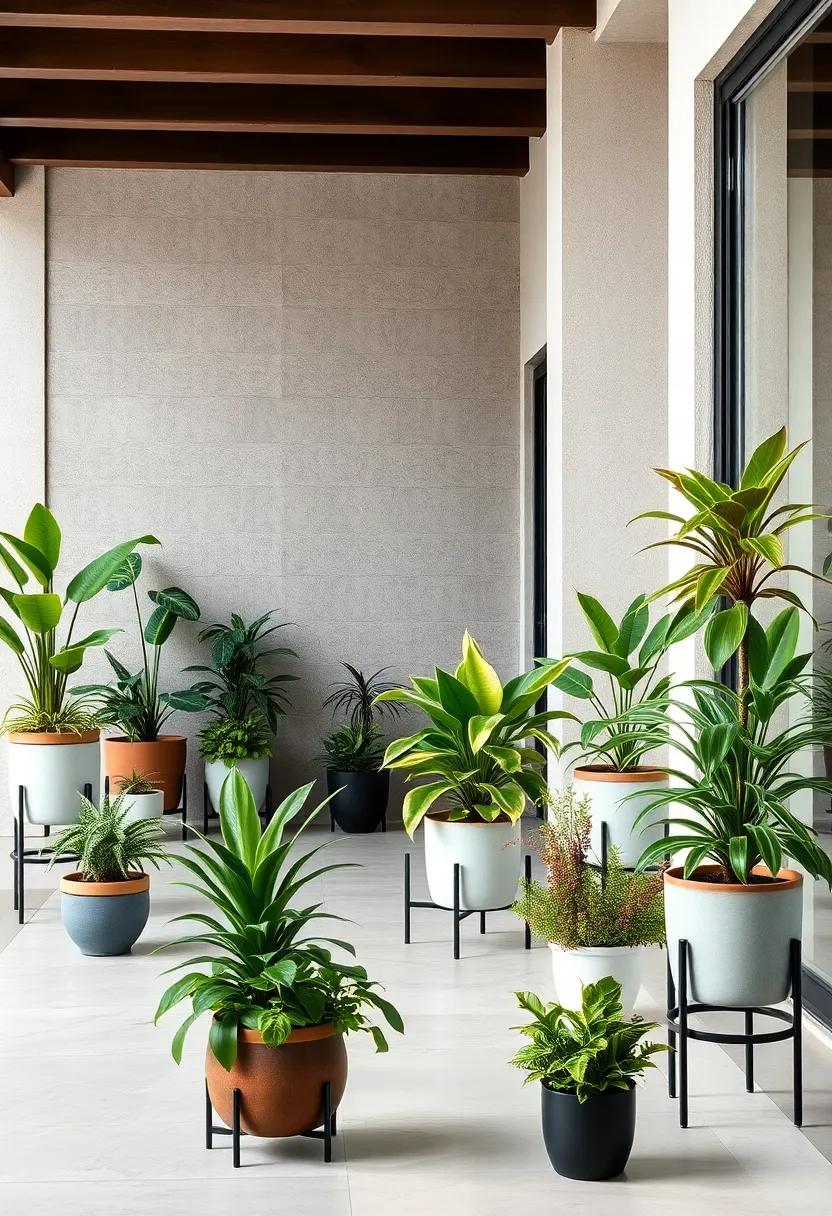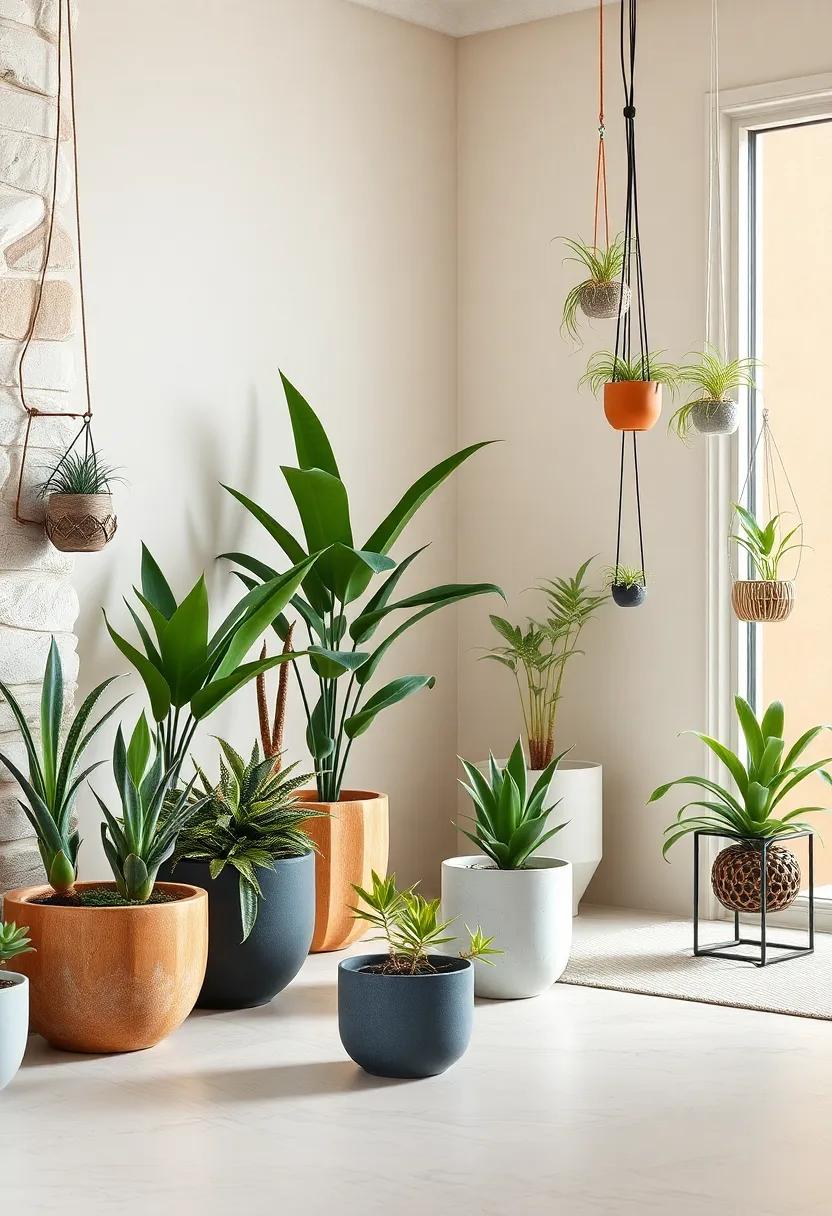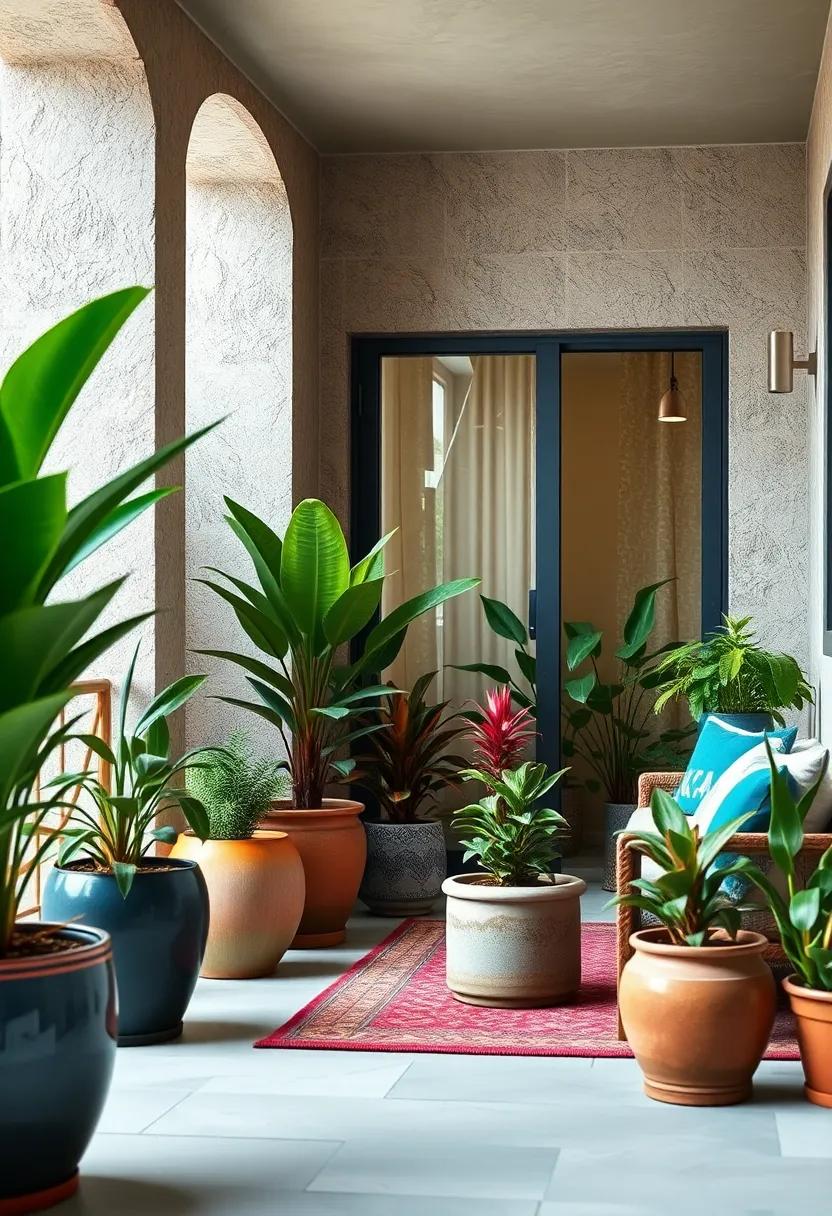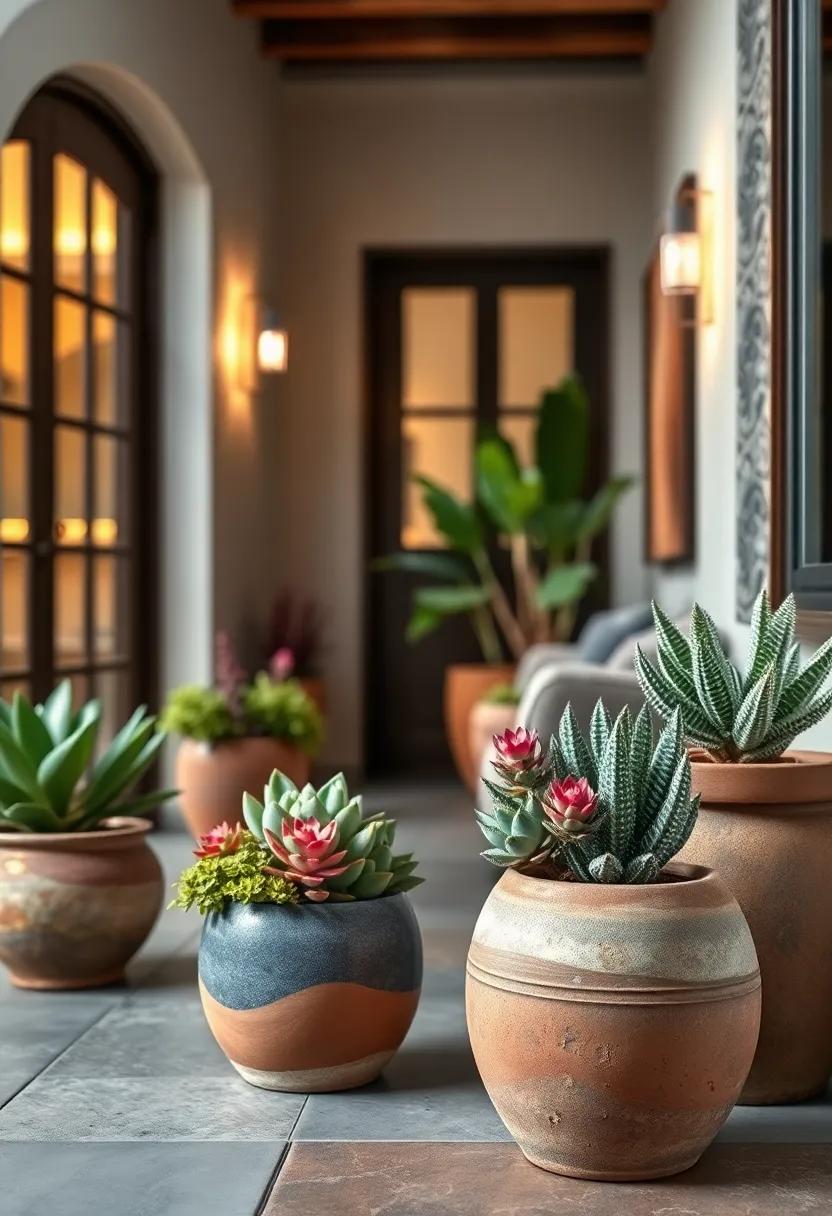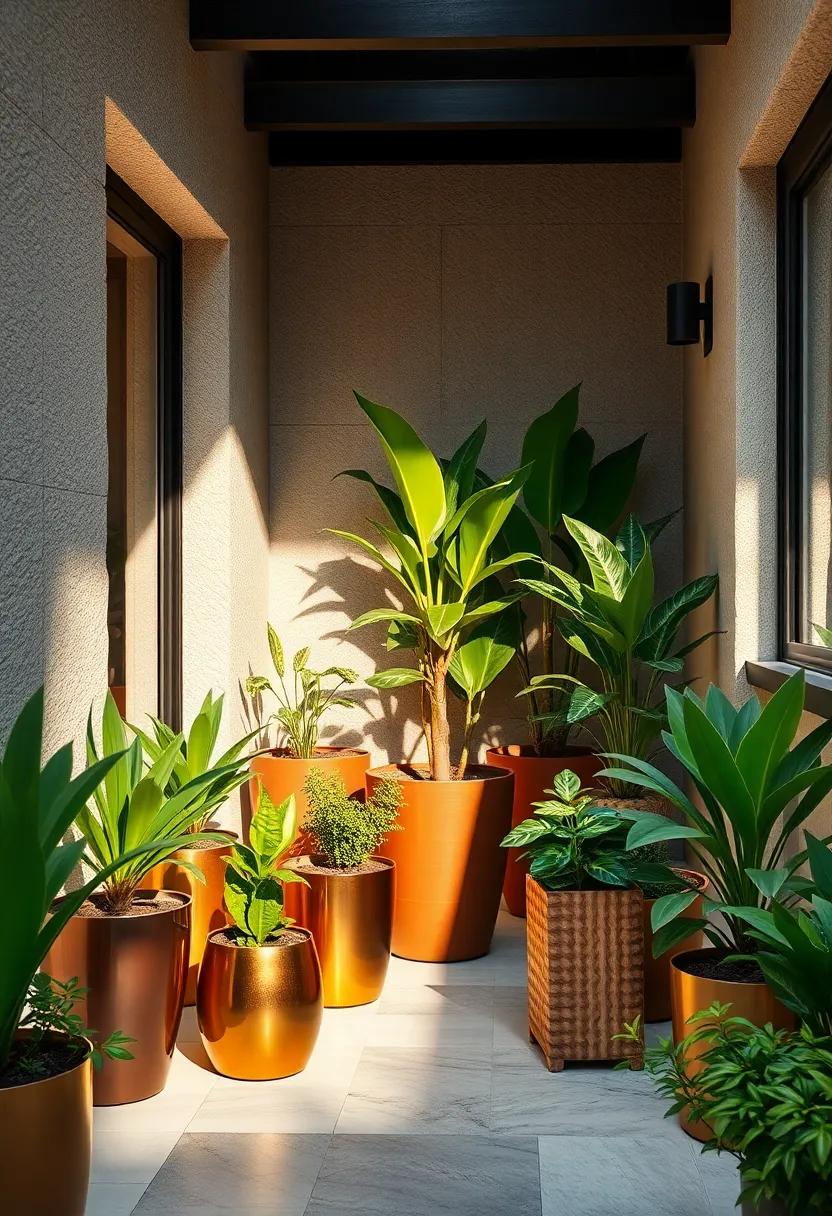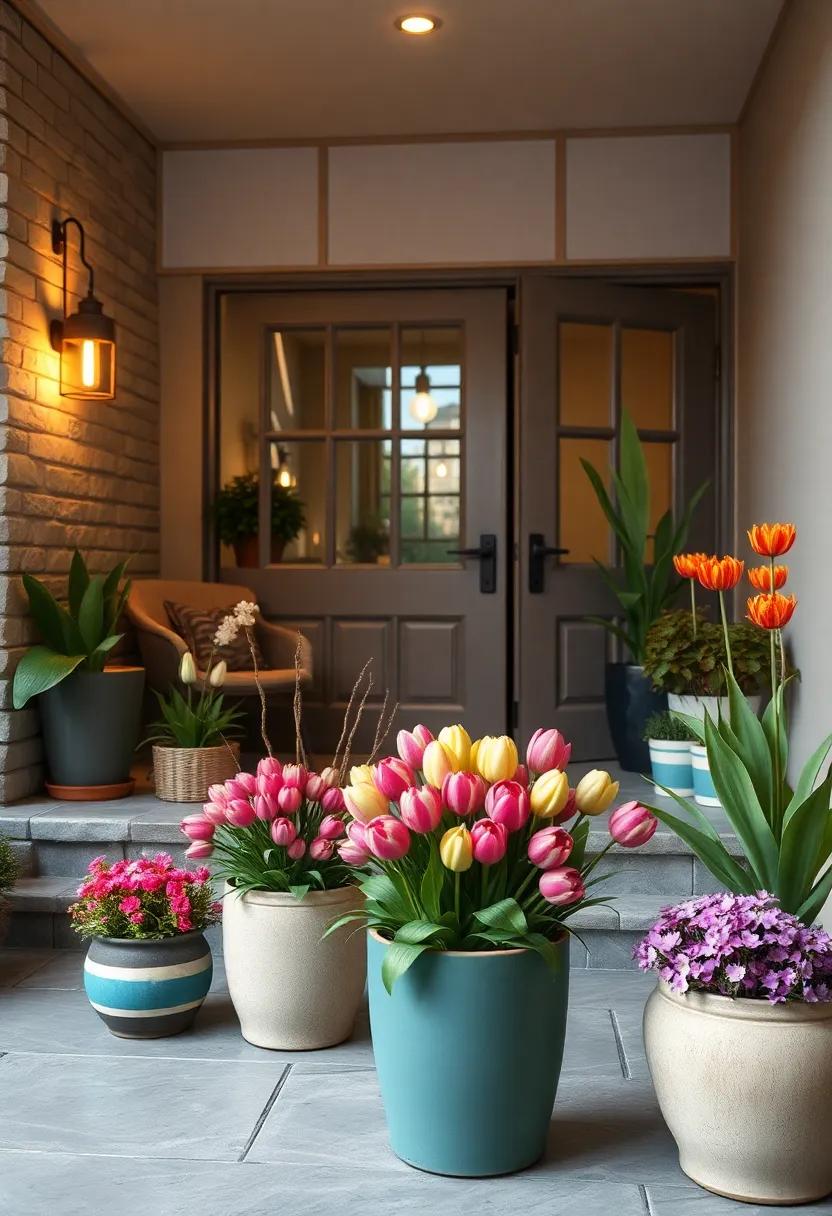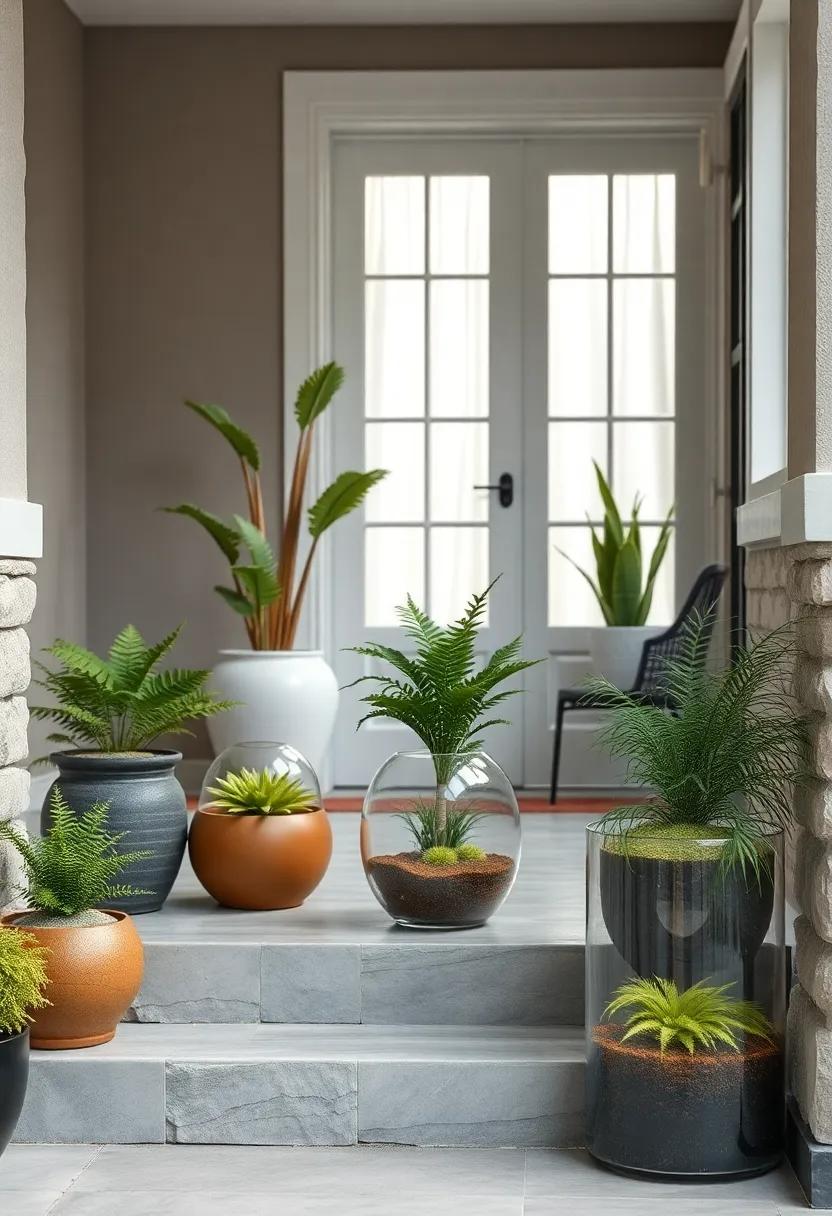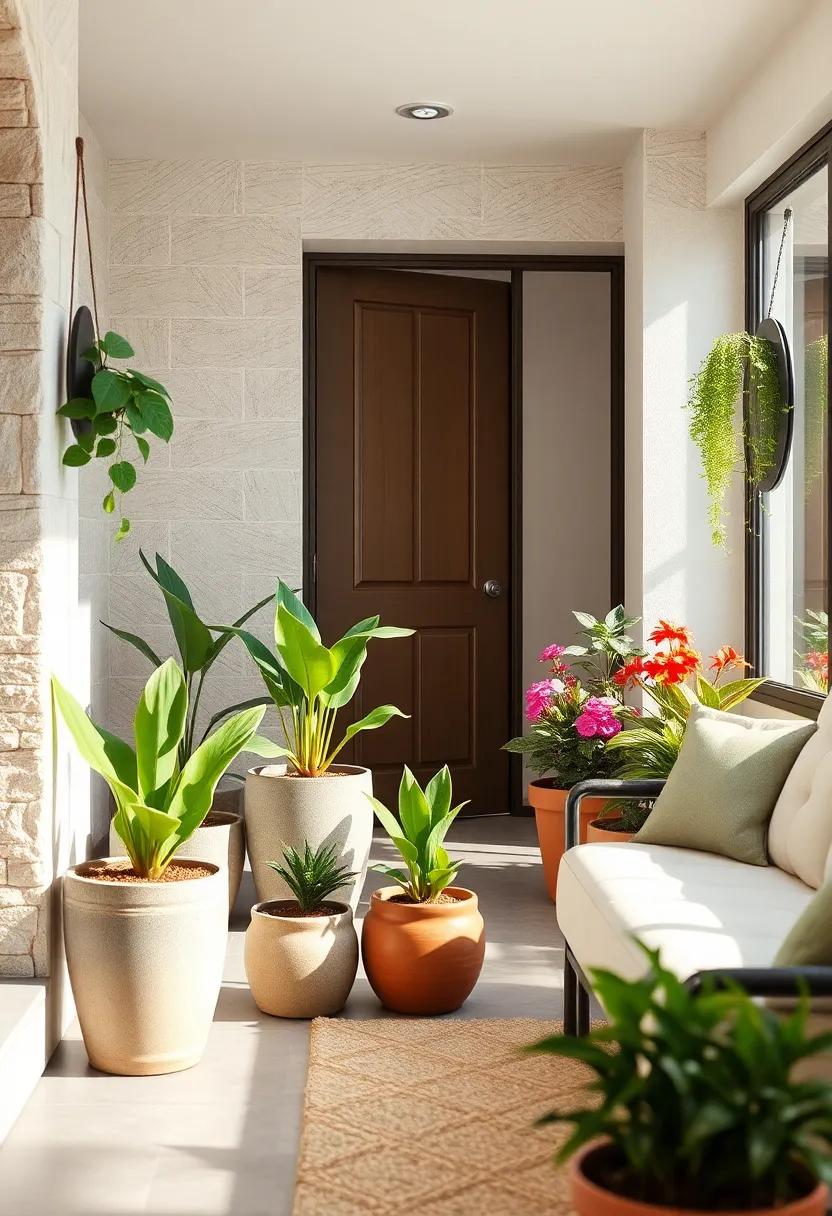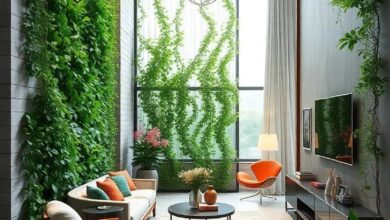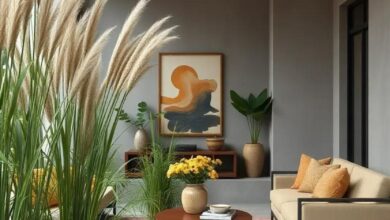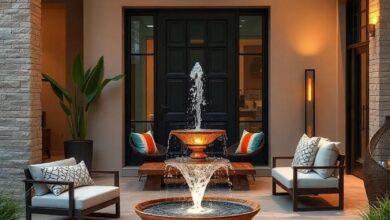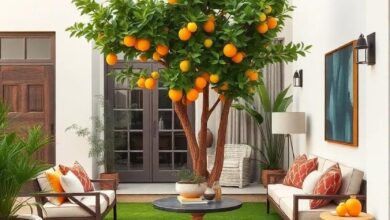Tiny Yard, Big Green: Creative Potted Plants for Small Front Spaces
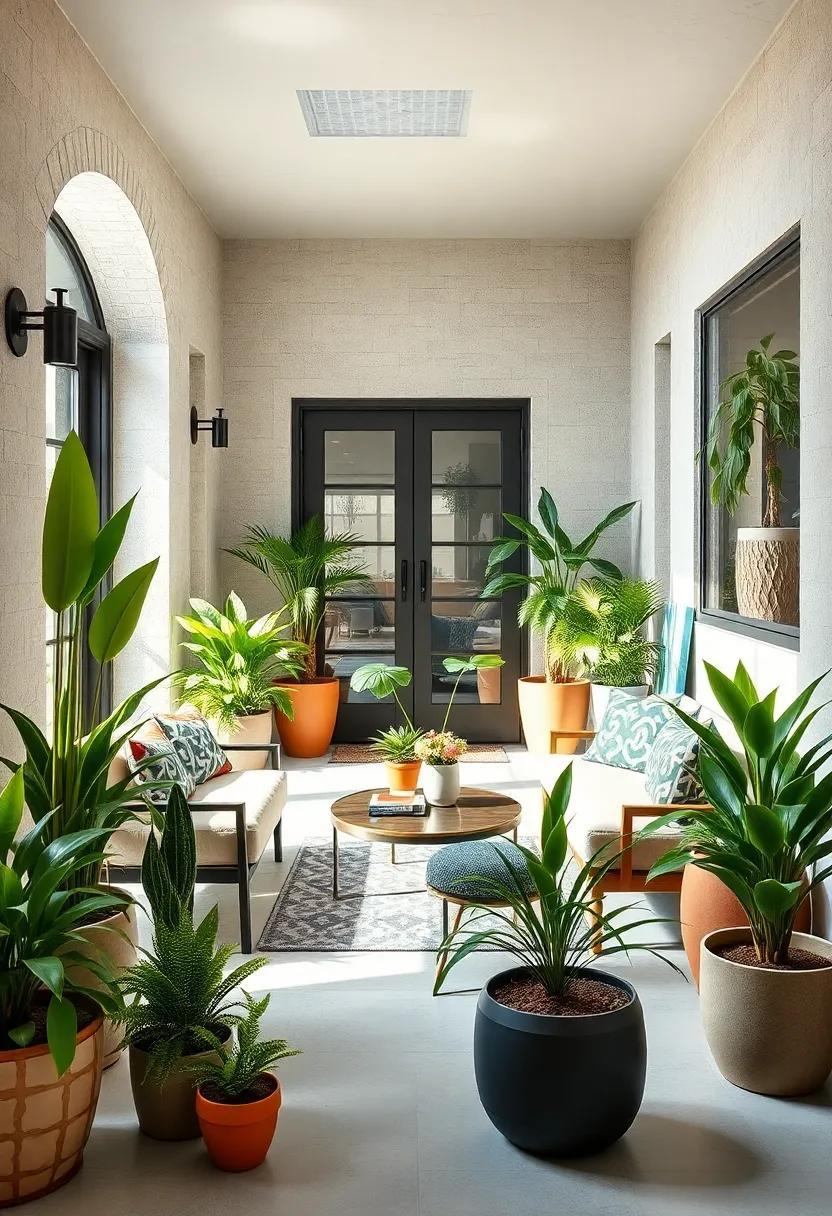
In a world where outdoor space often feels at a premium, even the smallest front yards can become vibrant patches of green. “Tiny Yard, Big Green” celebrates the art of transforming limited outdoor areas into lush, lively escapes using creative potted plants. Whether you’re working with a narrow porch, a tiny doorstep, or a quaint balcony, this guide invites you to rethink scale and embrace bold botanical choices. Discover how thoughtfully arranged pots and clever plant selections can turn your modest front space into a flourishing, welcoming garden-proving that sometimes, less really is more.
Small Front Yards Transformed into Lush Green Sanctuaries with Compact and Vibrant Potted Plants
Transforming modest front yards into vibrant green oases is all about embracing the charm of compact potted plants. Whether nestled on steps, lined along pathways, or arranged in clusters near entrances, these small-scale botanical installations inject life and color without overwhelming limited spaces. The key lies in selecting a mix of textures, heights, and hues-think trailing ivy cascading from hanging pots, bold succulents grounding the base, and splashy blooms that catch the eye. This diversity brings movement and energy, turning even the tiniest porch into an inviting sanctuary rich in natural beauty.
Creating such verdant retreats doesn’t require oversized planters or sprawling gardens; a careful curation of pots can do wonders. Consider these essentials for a flourishing micro-garden:
- Compact containers in varying shapes to create visual interest without crowding
- Drought-tolerant plants like aloe or lavender for easy maintenance
- Seasonal flowers that add bursts of vivid color and change with the calendar
- Vertical plant stands that maximize upward space, making the most of every inch
| Plant Type | Ideal Pot Size | Maintenance Level |
|---|---|---|
| Succulents | 4-6 inches | Low |
| Ferns | 6-8 inches | Medium |
| Petunias | 8-10 inches | Medium |
Colorful Arrangements of Succulents and Cacti Bringing Life to Narrow Garden Corners
Transform those narrow garden corners into a vibrant oasis by mixing the quirky charm of succulents with the sculptural elegance of cacti. These low-maintenance marvels thrive in limited space while offering exciting pops of color and texture that can brighten any tight spot. Arrange them in tiered pots or slender troughs to maximize vertical space and create a living mosaic that changes with the seasons. Their diverse shapes-from the rosette patterns of echeverias to the bold spines of barrel cacti-invite the eye to linger, making your compact garden feel lively and thoughtfully curated.
To achieve a striking yet balanced display, consider grouping plants by their water needs and color tones. Here’s a simple guide to help you orchestrate your miniature desert garden:
| Plant Type | Color Palette | Tips for Grouping |
|---|---|---|
| Succulents | Pastel pinks, soft greens, purples | Cluster by similar leaf shapes for harmony |
| Cacti | Vibrant greens, deep reds, golden spines | Place taller cacti at the back for height |
| Mixed | Contrasting bright flowers with muted greens | Alternate textures for visual interest |
- Use colorful pebbles or sand as a decorative top layer to add extra flair and contrast.
- Incorporate small accents like miniature figurines or painted pots to personalize your arrangement.
- Rotate your pots periodically to ensure all plants receive ample sunlight.
Elegant Vertical Gardens Showcasing Cascading Greens on Limited Front Porch Spaces
Transforming even the smallest porch into an oasis of green becomes effortless with the artful use of vertical gardens. By utilizing walls and railings to their fullest, these living installations create a lush, cascading effect that maximizes every inch of vertical space. Imagine a tapestry of trailing ivies, vibrant ferns, and flowering vines harmoniously arranged to draw the eye upward, imparting a sense of height and openness to your tiny yard. This not only frees up floor space but also adds depth and texture, making your limited outdoor area feel inviting and alive with nature’s charm.
To help you visualize the possibilities, here’s a quick look at popular plants perfect for vertical gardening on small porches:
| Plant | Growth Habit | Care Level | Ideal Light |
|---|---|---|---|
| English Ivy | Cascading vine | Easy | Partial shade |
| String of Pearls | Trailing succulent | Moderate | Bright indirect |
| Boston Fern | Feathery fronds | Moderate | Shade |
| Petunias | Upright and trailing | Easy | Full sun |
- Hanging pockets: Perfect for succulents and herbs, these allow easy access and rearrangement.
- Modular planters: Stackable and customizable, great for creating mini living walls.
- Rail-mounted pots: Ideal for bright, sun-loving flowers and cascading greens alike.
With a mix of textures, colors, and heights, your green sanctuary will become a signature feature of your home, proving that size is no barrier to style and sustainability.
Creative Use of Vintage Containers to Add Personality and Greenery to Tiny Front Yards
Vintage containers bring a distinct charm that instantly transforms even the smallest front yards into lush, inviting oases. Consider repurposing items like antique teacups, weathered wooden crates, or galvanized metal buckets as unique planters. Their worn textures and nostalgic appeal add layers of personality that modern pots often lack. These containers effortlessly blend rustic aesthetics with vibrant greenery, making every inch of your tiny outdoor space feel thoughtfully curated and alive.
To create a harmonious display, try mixing plants with different heights and leaf shapes inside your vintage vessels. For example:
- Trailing ivy spilling over the edge of a vintage ceramic bowl
- Succulents packed inside a retro tin box
- Miniature ferns thriving in a chipped enamelware pot
This combination not only maximizes greenery but also adds visual intrigue. By mixing and matching containers and greenery this way, you turn every pot into a conversation piece that exudes warmth and character.
Miniature Herb Gardens Nestled in Artistic Pots Creating Aromatic and Edible Front Spaces
Transform even the tiniest yard into a sensory delight by celebrating the marriage of greenery and artistry. Miniature herb gardens cradled in hand-painted, patterned, or sculptural pots bring more than a splash of life-they create an intimate sanctuary of aroma and flavor right at your doorstep. Imagine delicate basil leaves brushing against vibrant rosemary sprigs, all nestled within ceramic containers that reflect your personal flair. These tiny ecosystems not only uplift the visual appeal but invite passersby to breathe in the fresh, herbal fragrance that effortlessly adds a welcoming touch to urban facades.
Beyond their aesthetic charm, these compact herb pots serve as a practical source of fresh ingredients for everyday cooking, ensuring you’re never far from a pinch of thyme or a sprig of mint. Consider mixing and matching containers with varied heights and textures to create a dynamic green vignette that’s both functional and whimsical. Here’s a quick guide to kickstart your aromatic adventure:
- Basil: Sweet and versatile, perfect for pesto and salads.
- Thyme: Earthy undertones ideal for roasting and stews.
- Mint: Refreshing addition to teas and desserts.
- Rosemary: Piney aroma that elevates grilled dishes.
- Chives: Mild onion flavor, great for garnishes.
Whimsical Plant Displays Using Layered Pot Stands to Maximize Limited Yard Footprint
Elevate your green sanctuary by incorporating layered pot stands that turn a small yard into a playful mosaic of colors and textures. These vertical arrangements allow you to showcase a variety of plant species without sacrificing precious ground space. Imagine a tiered display where trailing ivies cascade from the highest pots, while vibrant succulents and cheerful blooms nestle snugly below. This not only adds depth and dimension but creates a living sculpture that invites curious glances and inspires gardening creativity.
To achieve the perfect balance, consider mixing pots of different sizes and materials-ceramic, terracotta, and reclaimed wood all add character. Enhance the whimsical effect by introducing unexpected elements such as colorful stones or tiny figurines between plants. Below is a small guide to help you pick ideal plants for each tier of your stand:
| Top Tier | Middle Tier | Bottom Tier |
|---|---|---|
| Trailing Ivy Climbing and cascading beauty |
Bright Geraniums Bold splashes of color |
Succulents & Aloe Low maintenance favorites |
- Tip: Rotate your stand periodically to ensure even sunlight exposure.
- Tip: Use lightweight pots to make rearranging easier.
- Tip: Incorporate herbs for a practical and fragrant element.
Chic and Modern Ceramic Pots Featuring Bold Colors and Textures Elevating Small Front Gardens
Injecting vibrant hues and tactile finishes into your small front garden can completely transform its vibe. Ceramic pots offer a fantastic canvas to play with color and texture-think glossy jewel tones, earthy mattes, or even playful geometric patterns. These pots don’t just hold plants; they become statement pieces that draw the eye, enhancing curb appeal without overwhelming limited space. Imagine grouping a trio of cobalt blue, mustard yellow, and matte black ceramic pots, each boasting different plants with varied foliage textures, to create an artful yet cohesive display.
To make the most of these smart containers, consider incorporating bold textures that contrast nicely with your greenery. For instance:
- Rough, speckled ceramics paired with soft trailing vines
- Glossy, smooth surfaces complementing spiky succulents
- Hand-painted patterns adding a personal, crafted touch
By layering color and texture thoughtfully, even the tiniest front garden can feel luxurious and vibrant. Below is a quick guide to popular ceramic pot finishes and ideal plant pairings, helping you pick combinations that truly elevate your space:
| Pot Finish | Visual Effect | Suggested Plants |
|---|---|---|
| Glossy | Bright, reflective | Ferns, Ivy |
| Matte | Subtle, modern | Succulents, Cacti |
| Textured (speckled, ridged) | Organic, tactile | Herbs, small shrubs |
Curated Collection of Air Plants Hanging Delightfully in Unique Planter Designs for Small Areas
Air plants bring a breath of fresh air to limited spaces, thriving without soil and adapting effortlessly to imaginative displays. Their lightweight and resilient nature make them perfect candidates for hanging installations where traditional planters might feel bulky. Experiment with sculptural holders crafted from driftwood, copper wireframes, or geometric terrariums, each showcasing these plants like living art suspended in mid-air. This approach not only maximizes vertical space but also adds an element of whimsy and elegance to your outdoor nook.
When selecting planters for compact areas, consider pieces that double as statement décor-think macramé hangers, recycled glass spheres with minimalist metal accents, or rustic upcycled tins that blend eco-conscious charm with practicality. Below is a quick guide to pairing air plants with unique planters designed to complement various small front spaces:
| Planter Style | Material | Visual Impact | Best Space |
|---|---|---|---|
| Geometric Terrarium | Glass & Metal | Modern & Sleek | Balconies, Porches |
| Driftwood Holder | Natural Wood | Organic & Rustic | Garden Corners |
| Macramé Hanger | Cotton Rope | Boho Chic | Entryways, Small Patios |
| Recycled Glass Sphere | Repurposed Glass | Eco-Friendly Glow | Window Ledges |
Tropical Foliage in Eye-Catching Containers Providing a Lush Escape in Compact Front Yard Settings
Embracing tropical greenery in compact front yards transforms limited outdoor spaces into verdant retreats that invite relaxation and admiration. Utilizing eye-catching containers such as sleek ceramic pots, rustic wooden crates, or vibrant glazed urns amplifies the lush vibe without overwhelming the area. Plants like bird of paradise, elephant ear, and philodendron bring dramatic foliage shapes and rich colors, creating layers of texture amid the concrete or brick surroundings. These containers not only define the green zones but also offer portability, enabling easy rearrangement to catch optimal sunlight or freshen up the display on a whim.
Integrating tropical foliage into your miniature garden doesn’t mean compromising on style or function. Consider pairing various plants using this simple, adaptable planting guide:
| Plant | Container Style | Best Placement |
|---|---|---|
| Bird of Paradise | Tall ceramic pot | Corner near entrance |
| Elephant Ear | Rustic wooden crate | Along pathway |
| Philodendron | Bright glazed urn | Window side |
Layering heights and mixing foliage textures beneath compact canopies ensures your tropical potted plants offer a multidimensional, immersive experience. This approach transforms even the tiniest front yard into a continuous lush escape, where every step offers a breath of the tropics.
Vibrant Flowering Annuals in Geometric Planters Bringing Seasonal Brightness to Petite Front Gardens
To inject bursts of color into compact outdoor spaces, consider pairing vibrant flowering annuals with sleek, geometric planters. These planters, often crafted from materials like concrete, metal, or ceramic, offer a contemporary canvas that highlights each bloom’s radiant palette. Annuals such as petunias, marigolds, and begonias thrive in these containers, providing bright splashes of pinks, oranges, reds, and purples that draw the eye and uplift any petite front garden. Their seasonal nature encourages frequent refreshes, allowing you to experiment with new color combinations each year while maintaining a tidy, modern aesthetic.
When selecting annuals and planters, focus on versatility and harmony in such tight spaces. Here’s a quick reference to help you mix and match effectively:
| Annual Flower | Colors | Planter Shape | Sunlight Needs |
|---|---|---|---|
| Petunias | Violet, Pink, White | Hexagonal | Full Sun |
| Marigolds | Orange, Yellow | Rectangular | Partial to Full Sun |
| Begonias | Red, Coral, White | Cylindrical | Partial Shade |
| Impatiens | Pink, Red, Lavender | Square | Shade |
- Choose planters: that echo the garden’s architecture to create a cohesive look.
- Seasonal swaps: replace annuals as the season changes to keep colors fresh and inviting.
- Compact layering: use varying planter heights and geometric shapes to maximize visual interest in limited areas.
By integrating these lively flowers within minimalist geometric planters, even the smallest front yards can become dazzling expressions of seasonal cheer and style.
Rustic Wooden Crate Planters Filled with Hardy Perennials Expressing Charm in Little Yard Nooks
Embracing the rough-hewn texture of rustic wooden crates introduces an inviting warmth to compact garden corners where traditional pots may feel overpowering. These charming containers, weathered by time or artfully distressed, serve as a perfect canvas for hardy perennials that thrive with minimal fuss. Their natural timber palette harmonizes seamlessly with lush greens, creating pockets of serene beauty that invite a pause amid the busiest front yard scenes.
Choosing the right perennials is crucial; they not only bring longevity but also resilience during changing seasons. Consider incorporating plants with the following attributes:
- Drought tolerance to reduce watering needs
- Compact growth habit to suit limited space
- Textural diversity for visual depth and interest
- Seasonal blooms that offer subtle color shifts year-round
This thoughtful pairing transforms overlooked nooks into vibrant green showcases, proving that style and sustainability can coexist beautifully even on a very small scale.
Creative Mixes of Grasses and Ferns in Artistic Pots Crafting a Relaxed and Natural Front Space
Incorporating a blend of ornamental grasses and lush ferns into handcrafted pots elevates any small front space with a breath of fresh, organic air. The textured blades of grasses sway gently in the breeze, while the delicate fronds of ferns add a touch of softness and deep greenery. Opt for pots with artistic finishes-think matte ceramics, rustic wood textures, or metallic glazes-to create visual intrigue and complement the natural vibe. This combination gives your yard a subtle yet dynamic personality, making it feel effortlessly relaxed and inviting.
To achieve harmony in your miniature garden, consider these creative pairing tips:
- Contrasting Heights: Mix taller grasses with low-growing ferns to add layers and depth.
- Varied Pot Sizes: Use an assortment of pot dimensions and shapes for a playful yet balanced look.
- Unified Color Palette: Stick to earthy tones in your pots to keep the focus on the vibrant greens of the plants.
- Texture Play: Combine the wispy texture of grasses with the fine lace-like patterns of ferns for tactile interest.
Bold Use of Metallic Containers Highlighting Contrasts and Reflections in Small Green Corners
Inject a touch of modern elegance into your small green spaces by opting for metallic containers that gleam with boldness and sophistication. These containers do more than just hold your plants-they transform the entire vignette through dynamic contrasts between the gleaming surfaces and lush greenery. Imagine the interplay of natural light reflecting off brushed copper, stainless steel, or aged brass pots, creating a shimmering backdrop that highlights every leaf and stem with a dramatic glow. This technique is especially effective in cozy front yards where space is limited, as metallics add visual depth without the bulk of traditional planters.
To optimize the impact of these shiny accents, consider pairing them with plants that have varied textures and colors. Here are some striking combinations to try:
- Mirror-finish aluminum pots with spiky succulents, such as Haworthia or Aloe Vera
- Rustic bronze containers paired with soft, trailing plants like English ivy or string of pearls
- Polished steel planters housing vibrant ferns and begonias to dramatize reflections
| Metallic Finish | Plant Type | Visual Effect |
|---|---|---|
| Brushed Copper | Textured Cacti | Warmth & Contrast |
| Polished Chrome | Broad-leaf Ferns | Sharp Reflections & Depth |
| Aged Brass | Trailing Vines | Antique Charm & Soft Light |
Embracing reflective metallic pots not only maximizes the aesthetic potential of limited space but also cultivates a visually striking centerpiece that invites a second glance. This fearless approach to container choice elevates even the tiniest nooks into artful, green sanctuaries brimming with personality and style.
Dainty Miniature Trees Planted in Statement Pots Offering Vertical Interest and Depth to Front Yards
Elevate your compact outdoor space by incorporating miniature trees that bring not only greenery but also a striking vertical element. These petite arboreal beauties, carefully planted in bold, statement pots, transform even the smallest yards into dynamic landscapes full of character and charm. The contrast between the delicate foliage and the robust containers creates layers of depth that visually expand the front yard, making it feel more open and inviting without overwhelming the space.
Selecting the right pairings can be both an art and a joy. Consider using containers with rich textures or unexpected colors to complement the refined form of the tiny trees. Here’s how you can amplify impact effortlessly:
- Varied pot heights: Arrange a trio of pots at graduated levels to guide the eye upward.
- Mix materials: Combine terracotta, ceramic, and metal pots for a tactile and visual feast.
- Play with shapes: Round, square, or geometric pots create different storytelling moods.
- Foliage layering: Surround the base with low-growing ground covers or succulents for added texture.
| Mini Tree Variety | Ideal Pot Material | Growth Habit |
|---|---|---|
| Dwarf Japanese Maple | Glazed Ceramic | Spreading, delicate leaves |
| Boxwood Topiary | Classic Terracotta | Compact, spherical shape |
| Olive Tree | Rustic Metal | Upright, slender silhouette |
Zen-Inspired Stone Planters with Bonsai Trees Adding Tranquility and Elegance in Tiny Garden Spaces
The marriage of zen-inspired stone planters with meticulously cared-for bonsai trees creates a sanctuary of calm in even the most constrained front yard corners. These miniature landscapes not only elevate the aesthetic appeal of your outdoor space but also promote mindfulness and balance. Compact yet visually striking, stone planters provide a stable, earthy foundation for bonsai trees, echoing the natural harmony found in Japanese garden design. Their neutral tones and rugged textures contrast beautifully with the delicate, sculptural form of bonsai, creating an elegant focal point that invites contemplation and peace.
Incorporating these elements into a small garden can be as simple as selecting the right bonsai variety that complements your environment and the available light. From broadleaf to coniferous species, each brings its unique charm and symbolism. Consider these key factors when choosing your combination:
- Planter material: Opt for natural stone or concrete to enhance durability and authenticity.
- Tree style: Formal upright for sophistication, or informal for a more relaxed vibe.
- Placement: Situate near entryways or windows to maximize visual tranquility and interaction.
| Bonsai Type | Light Needs | Planter Style |
|---|---|---|
| Ficus | Partial Sun | Polished Granite |
| Juniper | Full Sun | Natural River Stone |
| Maple | Shade to Partial Sun | Weathered Slate |
Such thoughtful combinations draw the eye while conserving precious space-proving that serenity and grandeur coexist beautifully, even in the tiniest garden retreats.
Color-Coordinated Groupings of Blooming Bulbs in Painted Pots Creating Cheerful Small Front Displays
Imagine a cluster of delicate blooms bursting from terracotta and ceramic pots, each one dressed in a vibrant coat of paint that echoes the colors of the flowers inside. By pairing tulips with matching pastel-painted containers or daffodils with pots in sunny yellows, you create a harmonious visual melody that immediately lifts the spirit of any small space. This technique transforms even the tiniest porch or stoop into a lively garden vignette, where the playful juxtaposition of flower colors against painted pots becomes a dynamic, ever-changing work of art.
The magic lies not only in the colors but in the careful grouping of these potted bulbs to maximize impact without overwhelming the area. Grouping pots by color families-or even by seasonal bloom times-allows for a cascading effect of continuous cheer throughout the year. Consider the following quick guide to color coordination for your blooming arrangements:
- Warm Hues: Reds, oranges, and yellows with terracotta or burnt sienna pots.
- Cool Tones: Blues, purples, and whites complemented by sky blue or lavender containers.
- Neutrals & Greens: Whites and soft greens paired with crisp white or mint green pots.
Delicate Ferns and Moss Compositions in Glass Terrariums Placed Artfully on Front Porch Steps
Transform your front porch steps into a serene mini ecosystem with glass terrariums housing delicate ferns and lush mosses. These living glass sculptures bring an enchanting touch of nature to small spaces, offering a vivid contrast between the vibrant greens and the sleek transparency of the containers. When arranging, vary the heights and sizes of the terrariums to create visual interest and depth-small round globes nestled alongside tall rectangular prisms can effortlessly elevate the aesthetic, making every step a moment of botanical delight.
Key benefits of incorporating these terrariums include:
- Low maintenance-ideal for busy lifestyles or shaded porch corners.
- Year-round greenery without needing outdoor soil.
- Natural air-purifying properties enhancing your entryway ambiance.
For best results, choose varieties that thrive in humidity and indirect light, ensuring they remain vibrant without constant fuss. Consider grouping terrariums on a decorative tray or rustic wooden risers to keep your display cohesive and easy to care for, while inviting guests to admire a tiny, green refuge right at your doorstep.
Bright and Playful Use of Recycled Containers as Eco-Friendly Green Accents in Small Yards
Transform your small outdoor space into a vibrant oasis by repurposing everyday recycled containers into eye-catching planters. From colorful tin cans to vintage teacups, these unique vessels add charm and personality, breathing new life into your mini garden. Not only do they reduce waste, but their varied shapes and sizes create an eclectic display that maximizes every inch of space. Add a splash of color with bright paint or whimsical patterns that brighten the yard and invite playful energy into your front porch.
Embrace versatility and ingenuity by mixing and matching containers with different textures and heights to create depth and visual interest. For a tidy yet lively arrangement, consider grouping items using these creative tips:
- Stack small pots on rustic wooden crates for a tiered effect
- Hang repurposed jars with rope for a floating garden vibe
- Use painted pallet boards as vertical backdrops for wall-mounted containers
- Incorporate succulents and herbs which thrive in compact, well-drained containers
| Container Type | Suggested Plants | Eco Benefit |
|---|---|---|
| Old Mason Jars | Succulents, Miniature Ferns | Reuses glass, minimizes plastic |
| Painted Tin Cans | Herbs, Small Flowers | Extends lifecycle of metal scraps |
| Repurposed Wooden Boxes | Trailing Ivy, Pansies | Promotes wood reuse |
Artisan Clay Pots Filled with Bright Succulent Arrangements Enhancing Small Front Spaces with Texture
Bringing a tactile element to tiny outdoor nooks is effortlessly achieved by incorporating artisan clay pots bursting with vibrant succulents. These handcrafted vessels, with their warm, earthen hues and rustic textures, add a grounded charm that plastic or ceramic alternatives simply can’t match. Placing them on steps, window ledges, or clustered near doorways invites an organic, layered aesthetic that complements the green tones of the plants while introducing a natural architectural detail-perfect for enhancing the intimacy of small front spaces.
Why choose clay pots for succulents?
- Porous material allows better aeration and drainage, crucial for succulent health
- Develops a weathered patina over time, deepening visual interest
- Variety of shapes and sizes promotes creative arrangement options
- Lightweight compared to stone, enabling easy relocation and re-styling
| Succulent Variety | Recommended Clay Pot Shape | Visual Effect |
|---|---|---|
| Echeveria | Shallow, wide bowl | Showcases rosette form elegantly |
| Haworthia | Tall, narrow cylinder | Highlights spiky, upright growth |
| Jade Plant | Classic rounded pot | Balances broader leaves with pot’s softness |
| String of Pearls | Hanging, tapered pot | Adds playful trail and movement |
In Summary
In the end, even the tiniest patch of earth-or a modest cluster of pots-can burst with vibrant life and personality. Small front spaces don’t have to be a limitation; they’re an invitation to think creatively, to curate a living gallery that reflects your style and the joy of growth. With thoughtful selection and a dash of imagination, your tiny yard can become a big green sanctuary that welcomes both you and the world, one potted plant at a time.

